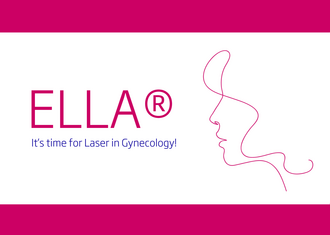New Clinical Study Highlights Benefits of Dual Wavelength Diode Lasers in Treating Ovarian Endometrioma
Jena, 28.05.2025 – A recent prospective, multicenter clinical trial has confirmed the clinical advantages of dual wavelength diode laser technology over traditional surgical methods, such as cystectomy, in the treatment of ovarian endometrioma. In the study, 70 women diagnosed with ovarian endometriosis were treated using the LEONARDO® Dual 45 diode laser, along with Myofiber CS and ELLA Click fiber from biolitec®. The results demonstrated:
- Minimal impact on surrounding healthy ovarian tissue
- A favorable pregnancy rate of 48.3% among previously infertile patients (14 out of 29)
- A low recurrence rate of 5.7% over a 12-month follow-up — one of the lowest reported in current literature
These findings underscore the diode laser’s potential not only as an effective treatment for ovarian endometrioma but also as a fertility-preserving alternative to cystectomy, which is often associated with a higher risk of compromising ovarian function. The study was conducted by the Universities of Cagliari, Foggia, and Catania, in collaboration with the Malzoni Research Hospital, and was published in the Journal of Minimally Invasive Gynecology in October 2024.1
Since ovarian endometriosis is a common condition, it is important that low-risk treatment being gentle on patients is now available to provide relief. Endometriosis is a benign chronic inflammatory disease that affects women in the reproductive age. Endometriotic cysts grow inside the ovaries. Symptoms of large cysts include pelvic pain, painful menstruation (dysmenorrhea), pain during sexual intercourse and even infertility. If a cyst ruptures and blood spreads into the abdominal cavity, this can constitute a medical emergency that may require surgical intervention.
To offer patients the gentlest possible treatment, the Malzoni Centre in Avellino, Italy, a medical centre specialising in gynecological surgery, has been working with the new LEONARDO® based laser technique for treatment of endometriotic ovarian cysts for several years. To date, more than 300 laser treatments for the condition have been carried out at the Malzoni Center’s Advanced Gynecologic Endoscopy Unit under the direction of Prof. Mario Malzoni, yielding very promising results.2
In addition to the favorable pregnancy rate and low recurrence rate, other important study findings include a statistically significant improvement in all domains of pain scores investigated, i.e. at 3, 6, and 12-months follow-up. The anti-Müllerian hormone (AMH), which is considered an indicator of ovarian reserve (i.e., the reproductive capacity of the ovaries), temporarily showed a significant impairment compared to the baseline value (p = 0.034) during the follow-up examination after 3 months. However, in the following months, the values almost returned to pre-surgery levels, i.e., the parenchyma was not affected by the laser treatment. Antral follicle count (AFC) of the operated ovary, another indicator of ovarian reserve, showed a significant increase after treatment at the 6-month and 12-month follow-up (p=0.005 and p=0.002, respectively). This shows that the laser procedure not only effectively and sustainably removes endometriotic cysts but also preserves ovarian reserve. The diode laser is versatile in gynecology, as it can also be used for operative hysteroscopies in outpatient settings, for conization, for vaporization of cervical vaginal dysplasia and condylomas, as well as for the treatment of vaginal atrophy and stress urinary incontinence in both young and menopausal women. Find out more about the wide range of laser therapies offered by biolitec® at www.biolitec.com.
1 D’Alterio, M.N. et al.: Evaluation of Ovarian Reserve and Recurrence Rate After DWLS
Diode Laser Ovarian Endometrioma Vaporization (OMAlaser): A Prospective, Single-Arm, Multicenter, Clinical Trial; JMIG – The Journal of Minimally Invasive Gynecology; October 2024; https://doi.org/10.1016/j.jmig.2024.10.021
2 Interview with Prof. Malzoni: https://www.youtube.com/watch?v=0jbrF9p7zLA&t=82s

